A Family History of Sacrificing for Freedom
By Robin Stanley
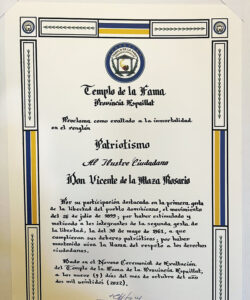 Although she’s lived in the United States since she was 6 months old, Edna Borchetta grew up connected to her native Dominican Republic and hearing stories of the key role her family played in its history.
Although she’s lived in the United States since she was 6 months old, Edna Borchetta grew up connected to her native Dominican Republic and hearing stories of the key role her family played in its history.
Manager of mission services and community impact programs at St. Vincent’s Medical Center, Borchetta especially recalls learning about the bravery of her maternal grandfather, Vicente de la Maza Rosario, in helping to overthrow two murderous dictators terrorizing the Dominican people.
In 1899, at the age of 19, Vicente and 34 others assassinated Ulises “Lilís” Hereaux on the streets of their hometown, Moca. Six decades later, at theage of 81, Vicente was also working behind the scenes of the murder of dictator Rafael Trujillo. Hisson, Antonio de la Maza, along with several other patriots, ambushed Trujillo on May 30, 1961.
As revenge for the assassination, three of Vicente’s sons were killed. This was just four years after the first of Vicente’s sons was murdered at the behest of Trujillo while he sat in a jail cell framed for murder.
Recently, Borchetta traveled to the Dominican Republic with her 85-year-old mother and two sisters to attend a ceremony honoring her grandfather and inducting him into the Hall of Fame in the province of Espaillat.
“It was an incredible experience to be there because you could feel the pride and the deep sadness as well,” Borchetta says. “I am in awe of what they did for their country and for the bravery that it took at a moment in history when so many people were paralyzed by fear, too afraid to say or do anything against the government.
“My grandfather was willing to lose his beloved sons — and they were willing to die — in pursuit of freedom.”
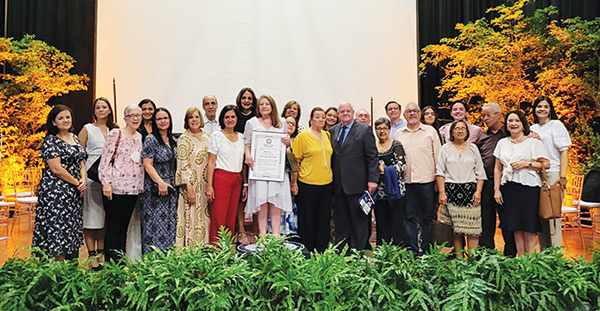
Daughter Perpetuates Dad’s Emergency Management Legacy
By Susan McDonald
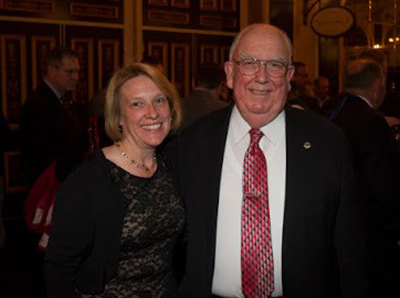
As director of pediatric services for the Hartford HealthCare Medical Group, Renata Hawks generally thinks of emergencies as a colicky baby at 3 a.m., or a broken bone that needs setting.
Sometimes, though, work life and private life overlap in interesting ways. Last year, Hawks found herself in Michigan, at a conference,ready to introduce HHC colleague Patrick Turek, system director of emergency management, at the International Association of Emergency Management (IAEM) conference.
She wasn’t there as a pediatrics specialist,or even for her HHC MG expertise. Hawks was a conference volunteer, representing and perpetuating her father’s legacy in emergency management.
The presentation — which Turek could not attend in person due to COVID-19 travel restrictions at the time — was entitled “The Lessons No One Tells You About: How a Healthcare System Leveraged Culture, Leadership and Resources to Respond to COVID-19.” Hawk’s lessons, however, were a different sort, and went back decades before the pandemic.
“It was very cool that my professional work crossed over into the volunteer work I do to continue the legacy of my dad, who was a founding member of IAEM and gave a great deal of his time and energy to the field of emergency management,” Hawks says.
Her father, Robert Bohlmann, CEM (certified emergency manager), died in 2016 after working for years as a volunteer emergency management director for communities across New England, including Simsbury, CT; Wells, Maine; and Plymouth, Mass. He also served as a public safety officer at Bradley International Airport, and police departments in Windsor Locks and Simsbury. His expertise led him to open Nuclear Security Forces Inc., to provide security to the Vermont Yankee Nuclear Power Plant.
A year after his death, Hawks began to volunteer on the IAEM’s scholarship committee and, two years ago, on the conference committee.
The scholarship committee, which her father helped start, is now named after him. Her connection began a few years before he died, when he enlisted her help at the conference to staff the scholarship auction booth to raise money.
“I quickly learned I had something to offer and enjoyed the opportunity to see my dad in his element. I volunteered my time for two years before becoming a commissioner,” Hawk says, adding that she watched her father mingle among the crowd and establish relationships with other emergency managers. “He took great pride in mentoring and helping up and coming emergency managers network.”
“When my dad passed in 2016, I knew he had planned for me to continue to be a part of IAEM and help to carry on his legacy in emergency management. In 2017 a scholarship in my father’s honor was created for undergraduate students pursuing a degree in Emergency Management. Each year I take a week off of work in the fall and spend that time volunteering at the annual IAEM conference.”
Work Spouses and Real Spouses
By Maggie Werner
If there’s such a thing as too much togetherness, these primary care provider couples haven’t experienced it yet. They spend almost all of their time together and we wanted to know how they make it work.
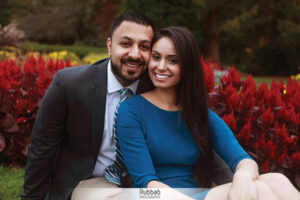 Drs. Vishal Kochar and Natasha Bajwa
Drs. Vishal Kochar and Natasha Bajwa
Before shipping off to medical school in Poland, Drs. Vishal Kochar and Natasha Bajwa met at orientation in Dallas. The first chance they got, they snuck off to be alone. Time together in Poland helped bring them close. They began dating 15 years ago and tied the knot in 2014.
What were your first impressions of each other?
“I just remember he was hilarious. I could not stop laughing,” Dr. Bajwa says. “It was my first time living away from home and he helped me adjust.”
Dr. Kochar continues, “She was the prettiest girl I saw and she ended up having a really good personality. She was really young, so she didn’t know how to cook. All she brought was a huge bag of leftover Halloween candy!”
Have you started a family?
“I was actually pregnant with our first daughter in my final year of residency at the University of Texas. I graduated June 30 and went into labor the next day. We welcomed our second daughter almost two years ago. It feels like we haven’t slept in 10 years!” Dr. Bajwa says.
What traditions have you started together?
“Every year on our anniversary we travel to a different destination and buy a souvenir. We’ve been to places like Hawaii, Mexico and Jamaica,” Dr.Kochar says.
“We also celebrate Indian holidays with our girls. We want them to grow up having the cultural background we did. Diwali, the festival of lights, is a big one we celebrate. We dress up, have Indian sweets, light candles and pray,” Dr. Bajwa adds.
What is it like working together?
“We chose to work in separate offices to make sure we had some distance in our lives. But, it’s reassuring and comforting working together. If I have questions, I send him a message and we shoot ideas off each other,” Dr. Bajwa adds.
“It’s also been helpful for us to grow together,” Dr. Kochar says.
What are you most proud of as a couple?
“We’re both the first doctors in our families, which is a big deal in our culture,” Dr. Bajwa offers, adding, “We’ve made our families really proud.”
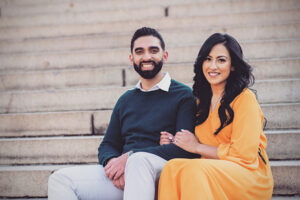 Drs. Shehrose Chaudry and Mahvish Qazi
Drs. Shehrose Chaudry and Mahvish Qazi
Until last July, Drs. Shehrose Chaudry and Mahvish Qazi had a long-distance marriage. They met when their best friends started dating,and got to know each other virtually, talking about medical school and exams before progressing to their daily lives. The couple married in March 2021, moved together in July 2022, and began working as primary care providers for Hartford HealthCare Medical Group soon after.
How was the long-distance relationship?
“It was very difficult,” Dr. Qazi says. “We were both in residency and limited as to how often we could see each other. Some times were better than others, but we made it through.”
“We had more free time our third year of residency but we’d still go a whole week without spending time together. Thankfully, we were able to keep in touch through phone calls and messaging,” Dr. Chaudry says.
What has been the best part of your marriage so far?
“I love that we’re finally able to live together,” Dr. Qazi notes. “Working at the same company and sharing similar interests is an added bonus.”
Dr. Chaudry continues, “I essentially married my best friend.”
What do you hope to accomplish as a couple?
“Giving back to the community through primary care is one of my long-term goals,” Dr. Chaudry shares. “As a couple, being the best physicians wecan be and role models to our younger siblings, friends and family.”
